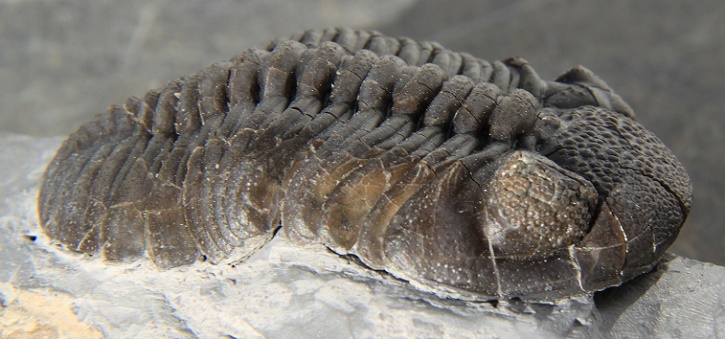While Ohio might not be the best place to dig for gems and minerals, there’s a lot of diverse materials there that might interest most rockhounds. The primary draw of the state is flint that Native Americans used to make arrowheads, and the dedicated prospector might be able to find some great fossils as well if they know where to look.

Flint in Ohio
Flint has a long history of being one of the favored tools of humanity. To this day the tradition continues, with people still keeping the art of knapping alive whether they use specialized, modern tools or go with the ancient methods.
Flint is a cryptocrystalline form of silica, and due to its natural percussive force, when applied properly, will move through the stone and allow for conchoidal fracturing. This type of fracturing is what allows for the edges of ancient stone tools, since grinding hadn’t reached the stage where we could make things like we can with modern metals.
While not as sharp as obsidian, flint offers a durable and usable edge for knives and arrowheads and many modern knappers like to find the best quality material they can. Obsidian is the main vogue now, since the internet allows people all over the world to utilize nodules of it, but flint is still used by a lot of hobbyists.
While much of the state has the stone, one of the main places which will interest the prospector is Nethers Farm which is located along the western edge of Flint Ridge State Park.
Chert, Flint & Chalcedony
There are three types of stones which are primarily found in the area. Chert, flint, and chalcedony are all present along Flint Ridge and the distinctions can be hard to figure out.
In general, chalcedony is more expensive and pretty than chert or flint. The stuff found in this area tends to be a milky blue and has exceptionally high silica content. It’s still suitable for knapping, and in fact it will hold a better, sharper edge than most flint, but it can be quite hard to crack into if knapping is your thing.
Flint and chert, on the other hand, are hard to distinguish from each other. For the most part, flint will be darker and found in smaller nodules within clay bearing soil. Chert is usually browner than flint, and you’ll find it’s a bit more granular. Of the two, flint is generally considered the better tool material but both can be quite suitable.
If knapping is your goal, do yourself a favor and look into heat treatment of the chalcedony and chert and you’ll be a lot happier. While some purists disdain the practice, it has a tendency to bring out better color and make things easier on the knapper.
Give it a shot, especially if you have an interest in the ancient art of tool making.
Digging for Fossils in Northwest Ohio
If fossils are your thing, instead of archaeology, you might want to take a look in the northwestern part of the state. There’s a ton of different marine fossils that stand to be found, primarily from the Devonian period.
This area was once shallow seas, but if you’re looking to take a piece of it home with you then some exploration is necessary. There are quite a few old quarries which are open to some collecting and you might have to look around to find the perfect one.

The silica of the formation is really only accessible through these quarries where the soil has been broken through. The most famous of these is an offshoot of Hanson Quarry, where an enterprising business decided to allow outsiders to dig for the fossils.
The area where they allowed for public digging is now known as Fossil Park and it’s open to the public so you can collect here without hassle. It’s completely free, but there’s a definite catch: no tools are allowed so you’ll have to crack the shale with either your bare hands or another rock.
One of the best ways to go about the latter way is to find a piece with a substantial point, lay the point in the area where you can see the layers, and strike it with another rock to drive it downwards. If done correctly, the shale will quickly give way and allow you to inspect it for fossilized remains.
If you’re looking to use tools, you may need to find some private property with a willing owner, but Fossil Park is a great location for rockhounds.
Also Read: Gold Panning and Prospecting in Ohio
Conclusion
Ohio may not be big on the pretty gems that you can find in other areas, but if you like ancient history then it’s actually a hotspot. You can find flint (as well as plenty of arrowheads left behind by ancient cultures) along with fossil specimens.
Take a look around and you might just end up with some interesting pieces. If you decide to give flint knapping a shot you might have just ended up with a great new way to explore the history behind the pieces of stone you favor.







